The Android N developer preview is out and it gives us a sneak peek into what Android 7.0 will eventually look like when it arrives officially later this year. Here are all the Android N features we’re expecting to see, with a particular focus on what currently exists in the latest Android N preview update.
Multi-window mode
The first official Android N feature to be confirmed was multi-window mode. Compatible apps (developers will need to add support for split screen mode individually) can be opened up side-by-side in Android N and resized with a movable slider. There’s also a new picture-in-picture mode for Android TV that works just like minimized video in YouTube.
![Enhanced Doze Mode]()
Enhanced Doze Mode
Doze now features a two-tier system. The first operates whenever the screen has been off for a while, whether your phone is stationary or not. This means you can now enjoy the benefits of Doze Mode anytime your phone is not being used, even when it is in your pocket or backpack. This means that you can save precious battery life when your phone is sitting in your pocket!
![New Android N settings menu]() New Android N settings menu
New Android N settings menu
Android N delivers a revamped settings menu too. The changes include the addition of a Suggestions drop-down section at the top and removal of the individual section dividers. Sound and Notifications have now been given their own dedicated sections too, rather than being grouped together like in Marshmallow. The hamburger menu returns and has now been explained, providing a swipe-out nav drawer that simply reproduces the top-level settings menu sections.
![New Notifications panel]() Revamped notification shade/quick settings panel
Revamped notification shade/quick settings panel
The notification shade and quick settings panel have received some interface tweaks in the newest version of Android. Messages can now be answered from the notification itself. With this, the user will not need to leave an app to answer a message or even unlock their phone.
Change display size in Android N
Android N also allows you to change the display size on your device, also known as changing your display’s DPI setting. Simply go to Settings> Display > Display Size and slide the slider to change the size of on-screen content.
![Clear all]() “Clear All” in Recent Apps menu
“Clear All” in Recent Apps menu
The app switcher has received a new Clear All button in the top left hand corner.
![Camera Changes]() Camera changes
Camera changes
The camera interface is slightly different with some new icons and you can now take photos while recording video via a dedicated shutter button above the recording button. Shooting photos on HDR mode is much faster than it used to be and Slow Motion has re-appeared in the hamburger menu navigation drawer.
![Unicode 9.0 emoji support]() Unicode 9.0 emoji support
Unicode 9.0 emoji support
The new Android N Developer Preview 2 also introduces Unicode 9.0 emoji, which are so new they haven’t even been announced yet. Besides a bunch of fun new emoji, Unicode 9.0 also “humanizes” many of its emoji, as opposed to the familiar cartoonish emoji in previous versions of Unicode.
![Vulcan]() Vulkan
Vulkan
Vulkan is a sexy new 3D Rendering API that promises to manage multiple cores in an even more efficient and fluid manner. Android N dev preview 2 now supports the Vulkan API so developers can start getting their apps ready.
![Security Improvements]() Security Improvements
Security Improvements
The latest version improves on M’s security, but it also introduces new sandboxing features and restrictions that should make malware infections less likely.
Hardware-Backed Keystore (Now Mandatory)
Starting with Android L, developers could store RSA, ECDSA, AES, and HMAC keys in the TrustZone modules. In Android N, the hardware-backed keystore will become mandatory for all devices. In the new version of Android, developers will gain new keystore-related APIs, which will also be able to verify whether their keys are stored in secure hardware or not, and to specify for how long the key can be used after the user authenticated to the app. The developers can also set up their apps in such a way that the data is not decrypted unless the user authenticates.
Fingerprint And Smart Lock Authentication
Secure lock screen usage has increased from about 50 percent to over 90 percent. Smart Lock detection has reduced secure lock screen prompts by 50 percent. Other than revealing these details, Google didn’t mention any new changes for fingerprint authentication in Android N.
Secure Networking
In Androd N, user-installed certificates are no longer trusted by default. Android will use only one Certificate Authority store across all devices (so OEMs won’t be able to add other certificates in various countries, either). This should ensure that Android devices can have the same level of “trust” everywhere.
Storage Encryption
In Android N, Google introduced a new feature called “Direct Boot,” which is supposed to eliminate the hassle of inputting a password at boot and allowing other apps to show notifications or other information before the user unlocks the device. Android N will use two types of storage encryption: device encryption and credentials encryption. The device encryption will be tied to the device, and the key will be stored in TrustZone hardware, which should be protected against key extraction. Application data will be encrypted only with “credential encryption,” so only the user will have access to that data.
Strictly Enforced Verified Boot
Android N device will not boot if the boot process has been maliciously modified. Google also introduced bit-level error correction in the verified boot feature, which can erase changes that would, for instance, keep a device rooted after it’s been rooted.
Checking Device Health
The SafetyNet API that Google provides through the Play services framework allows a developer to check a device’s health, so they can see whether the device has been tampered with and check how long it’s been since the last security update. This could be especially useful for enterprise applications where developers or companies would want to disable the applications from working on devices that haven’t been updated in a while.
Sandboxing
In Android N, Google also introduced a Linux kernel security feature called “seccomp” that was introduced to Linux operating systems 11 years ago, but only more recently started gaining adoption with the rise of containers, which take advantage of it. Seccomp can better sandbox first party apps such as Chrome, the mediaserver, and other Android processes, as well as third-party applications.

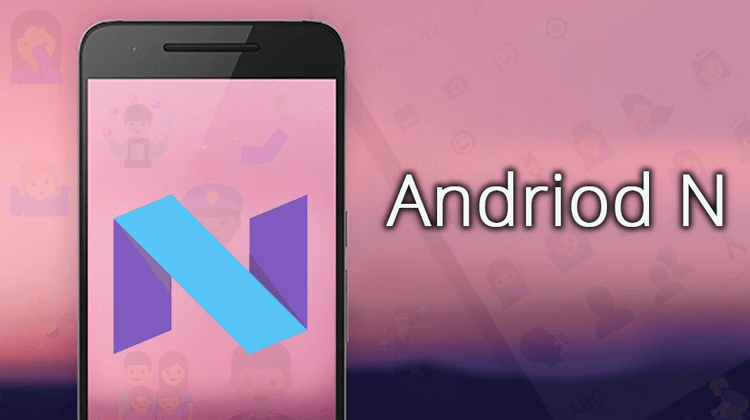
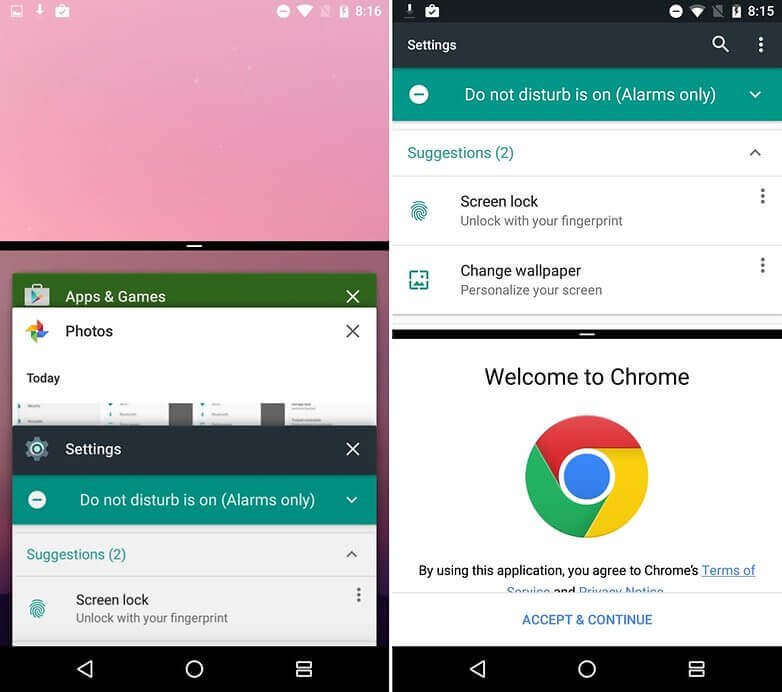
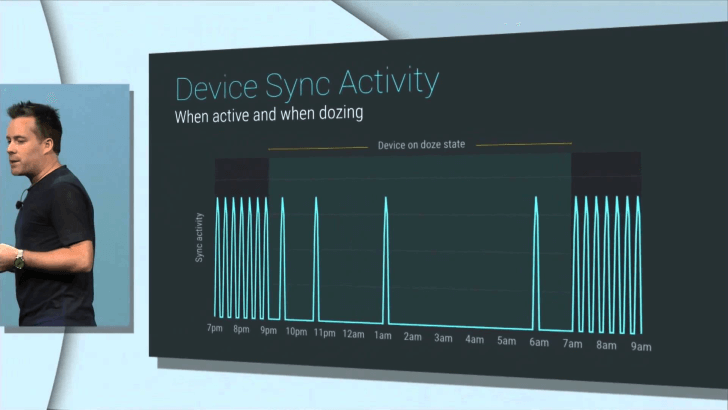
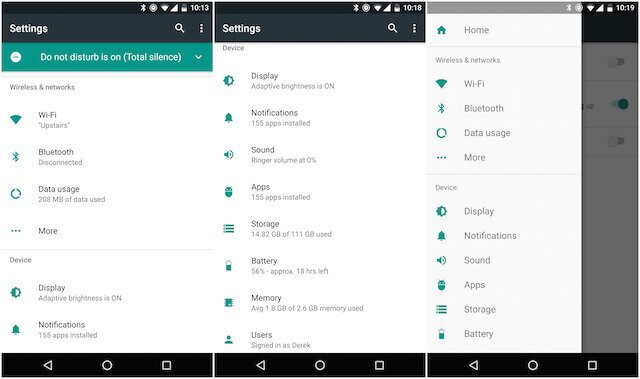 New Android N settings menu
New Android N settings menu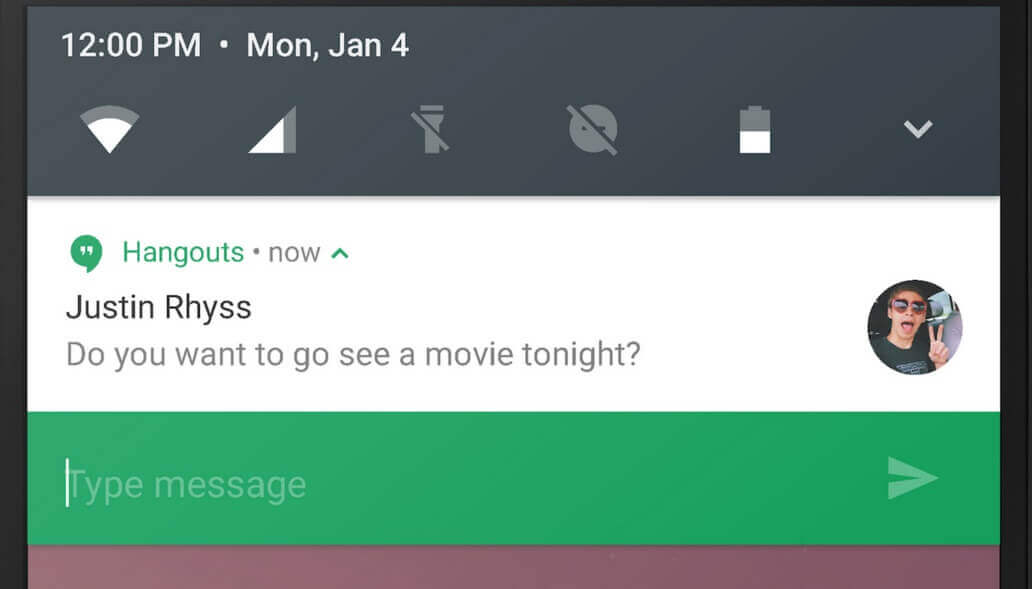 Revamped notification shade/quick settings panel
Revamped notification shade/quick settings panel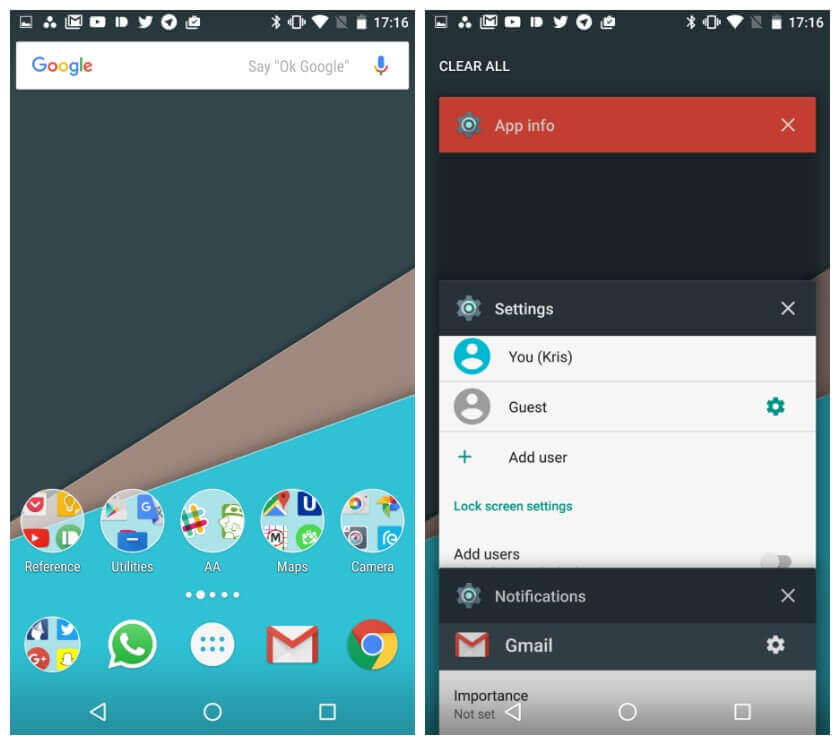 “Clear All” in Recent Apps menu
“Clear All” in Recent Apps menu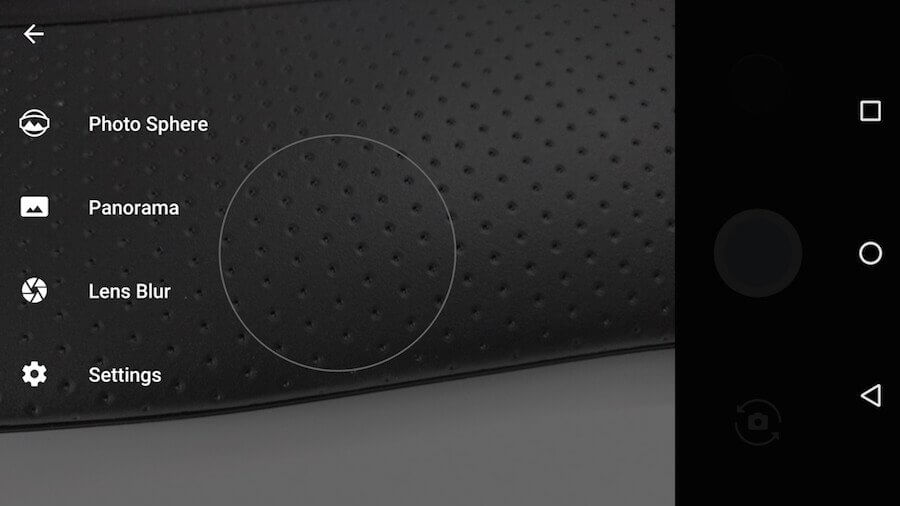 Camera changes
Camera changes Unicode 9.0 emoji support
Unicode 9.0 emoji support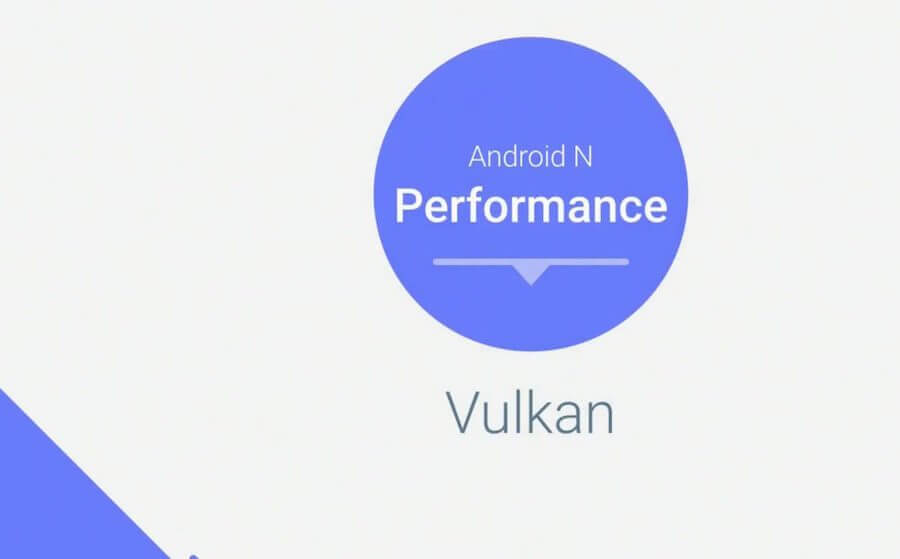 Vulkan
Vulkan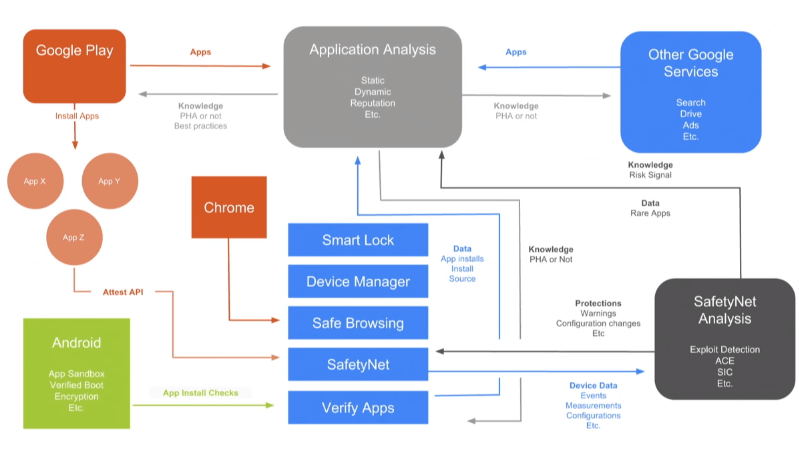 Security Improvements
Security Improvements